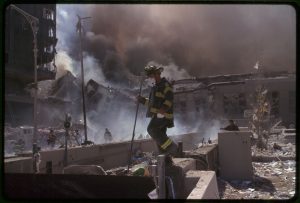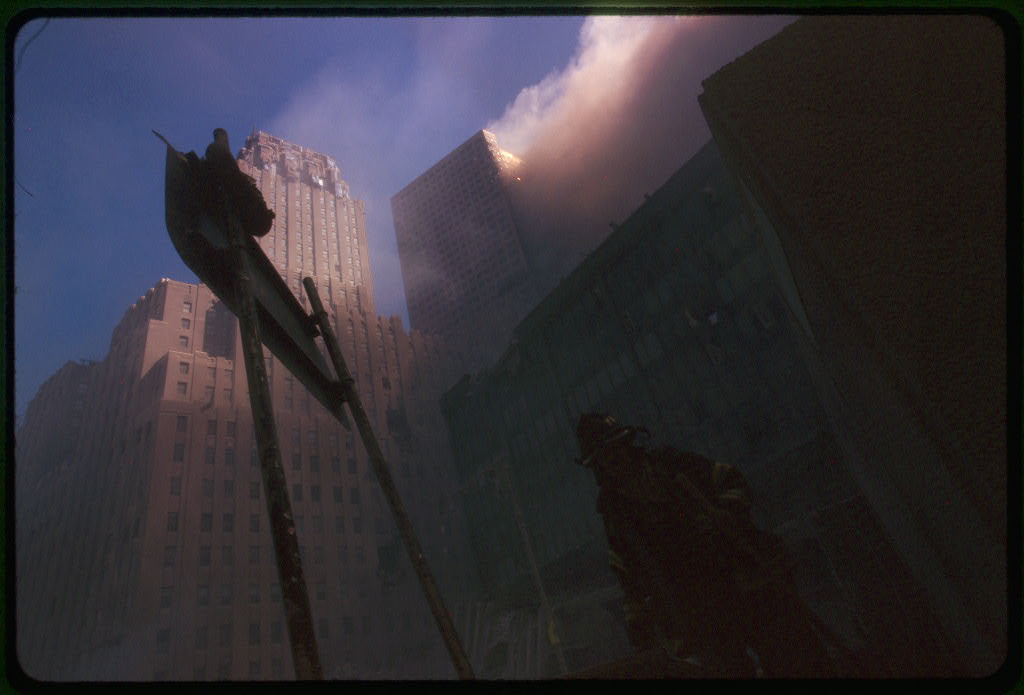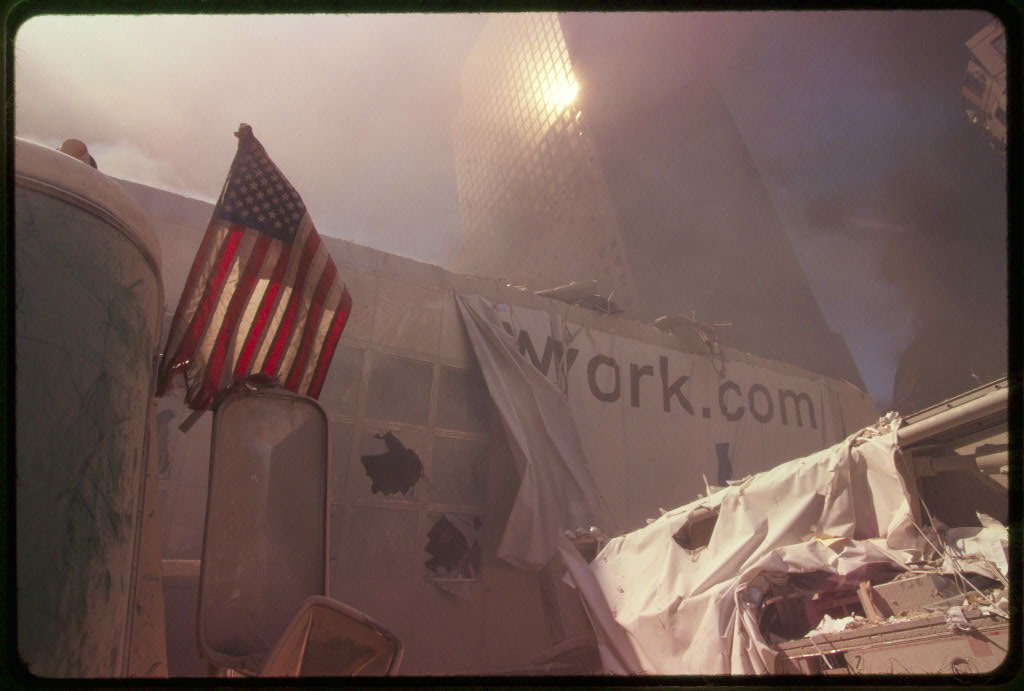Resolved: The New York Fire Department
 Today is September 11. It’s been 19 years since 343 firemen lost their lives during the collapse of the World Trade Center Towers in New York City. They rush forwarded into deadly danger to save lives. There wasn’t time to rally—soldier-like—with a flag in those tense moments that could spell life or death. Their charge was not into an open field, but rather upward—moving in close, crowded stairwells and pointing or carrying people to safety.
Today is September 11. It’s been 19 years since 343 firemen lost their lives during the collapse of the World Trade Center Towers in New York City. They rush forwarded into deadly danger to save lives. There wasn’t time to rally—soldier-like—with a flag in those tense moments that could spell life or death. Their charge was not into an open field, but rather upward—moving in close, crowded stairwells and pointing or carrying people to safety.
Recently, while combing through an online archive with New York newspapers from the Civil War era, I found words of appeal, patriotism, courage, and duty addressed to the New York firemen of 1862. Yet, perhaps the sentiments apply as we remember the courage of the firemen, police, and first-responders on another day in more recent New York history.
The August 5, 1862 edition of the New York Times carried a multi-column report of a recruiting meeting to enlist new volunteers to fill the ranks of the Second Fire Zouaves. Before the patriotic speakers raised the rallying call, the New York Fire Department set forth and adopted a set of resolutions:
Resolved, That the New York Fire Department feel justly proud of the gallantry and devotion of the Second Regiment New York Fire Zouaves during the recent severe campaign upon the Peninsula.
Resolved, That it is a duty, which we owe alike to them and ourselves, to recruit their wasted ranks and to supply whatever of men that are needed to fill the muster-rolls of our brethren in arms; and we pledge ourselves to use our individual efforts to make the regiment of Firemen worthy of the name of being foremost among the veterans of the Union.
Resolved, That we will prove ourselves not only ready at the sound of the bell to protect our fellow citizens from the fury of the flames, but also equally ready as loyal citizens at the tap of the drum to march in defense of our honored flag, for which Ellsworth and Farnham, and a host of others of our associates have gallantly fought in many a victorious field.

Later in the recruitment evening, the “keynote” — General Daniel Sickles—got interrupted multiple times as men came forward to enlist. One man gave his story:
My name is James Troy, formerly engineer of the Astor House. I have served my country once in the Mexican war, and I can do it again; and I hope I will come out as safely as I did before. It is true I leave a wife and children, but I guess they will be taken care of.

The speech-making came to a fervent crescendo with this appeal:
Firemen! In this hour of peril the appeal comes home to you. Never has call been made in vain upon your manhood and your patriotism. This surely is not the time when you shall falter and turn back. In every post of danger and duty your gallant Zouaves have been. Where the Minie balls flew deadliest, where the destroying angel bound his fullest sheaves in that bloody reaping on the Peninsula, there gleamed the red shirts of the Department, and there the bullet-riddled flag of your own regiment waved in the very front ranks of the fight…. Forward, for your honor and for vengeance.
That night six firemen publicly volunteered. The newspaper reported that more were expected to enlist and gave directions where to go to enlist for military service.
139 years later another generation of New York firemen stepped forward to meet the call. And as the smoke from the attack cleared, firemen raised the nation’s flag again. Once more at the front. Always resolved.
Sources:
The New York Times, August 5, 1862; Page 5. Accessed at Newspapers.com: https://www.newspapers.com/image/20305168/?terms=firemen#
Photographs from Library of Congress; not marked restricted.

Thanks for the thoughtful post. New York Firemen had their hands full on November 25, 1864 when Confederate operatives set fires in multiple hotels trying to create panic. Fortunately, no lives were lost in part owing to the well-coordinated efforts of the New York firemen. Nat Brandt’s book The Man Who Tried to Burn New York is a great description of this episode in Civil War history.
The New York Fire Zouave monument at Gettysburg, serving as a perch for a hawk. https://www.flickr.com/photos/leonandloisphotos/30867992716/in/photolist-P2GuCq-NUAhoq-P2GvZU-P2GwNY-P2GyKd-M6YDLR-LTCCZy-JYa8Py-Jm4b8J-GXeSMS-H1bVbB-FfZY5F-DwKwbV-DurqpU-CRL4gE-CXEZQR-BUZgrB-wyfWpB-w7ca6N-MZ4DL4-MZ4Jc8-M6ZPt4-L74uN1-JgbPeY-JgbPuY-Jgf4uK-FRshPs-GLXCNR-DgPRTC-Dvsu95-DFSi2F-DDypNq-DnbpKf-DmRpAu-DeAVx1-DeAxXN-DpaDtv-AXGzNU-xR8iD3-xznPd7-AtrM4P-wgUp1v-wgfnKh-t2ADGr-tFZsVi-dFwfCK-dFwdHg-dF6P45-b5ogzV-6AYh3J